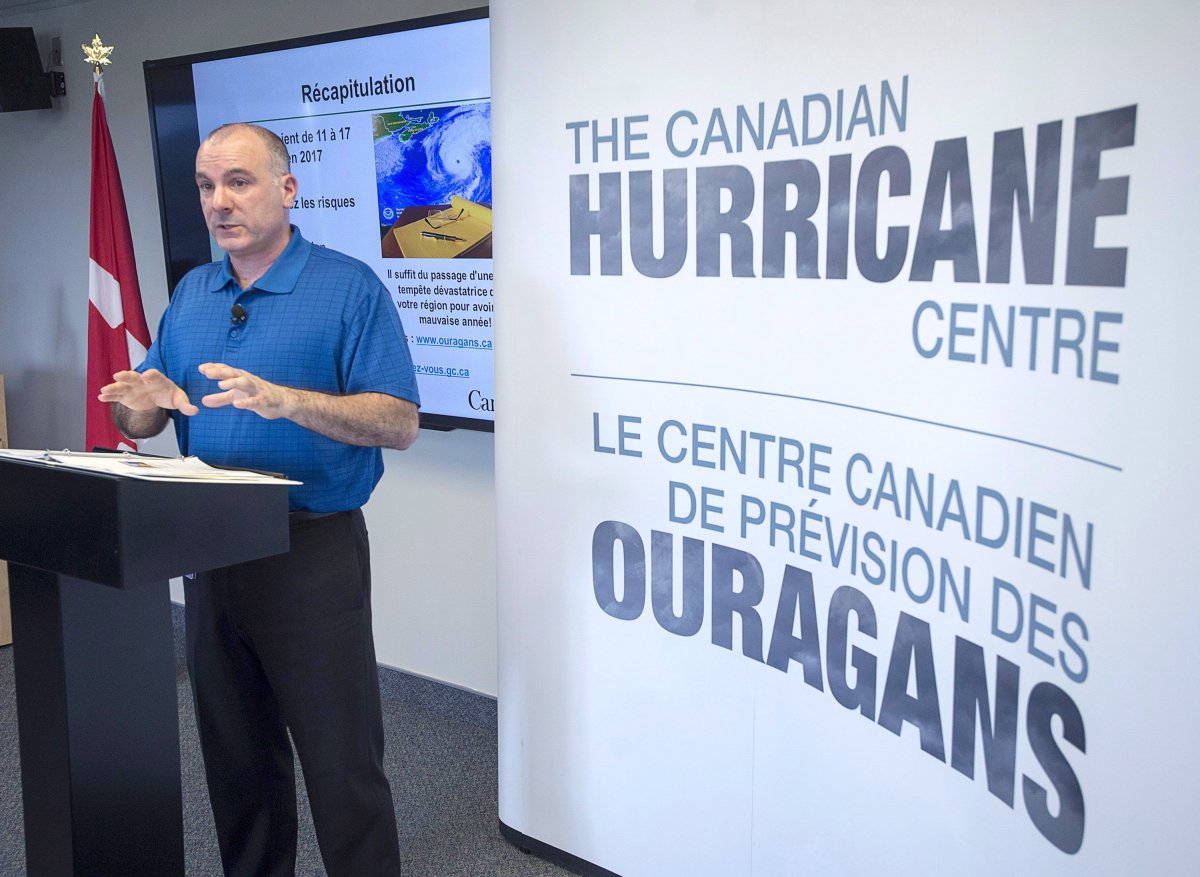As the Canadian Hurricane Centre warned of another active hurricane season Friday, one of the country’s top meteorologists said the COVID-19 pandemic could make it more difficult for people to prepare for a long line of tropical storms.

“I think this year is going to be particularly important to have those preparations completed prior to the arrival of a storm because of all the other situations we’re facing,” Bob Robichaud said during the centre’s annual pre-season briefing.
“What we usually see when a storm is approaching — just one or two days prior to the storm — is lineups at stores. That is the thing you’re really going to want to avoid this year — being caught in some of those lineups.”
Robichaud said there are a number of factors behind the prediction for an active season, including the fact that ocean surface temperatures are slightly above average. The warmer the water, the more energy there is to feed a storm.

As well, reduced vertical wind shear over the Atlantic will make it less likely that tropical storms will be pulled apart as they are forming and growing.
Meanwhile, the U.S.-based National Oceanic and Atmospheric Administration is also predicting an above-normal Atlantic hurricane season.
READ MORE: Philippines rides out first typhoon to hit amid coronavirus, no known casualties
The American agency said Thursday it is expecting 13 to 19 named storms — six to 10 of which could become hurricanes. The average number of named storms is 12, of which six typically become hurricanes.
As well, NOAA is predicting three to six major hurricanes churning out winds at 178 kilometres per hour or higher. On an average season, only three major storms develop over the Atlantic.
Last year’s hurricane season was also active, producing 18 named storms and three major hurricanes.
Among the most powerful was hurricane Dorian, which left a swath of devastation and death across the Bahamas — killing at least 70 people — before roaring over the Maritimes on Sept. 7-8.

Dorian’s hurricane-force winds knocked out electricity in all three provinces, leaving more than 500,000 homes and businesses in the dark for up to a week while causing an estimated $140 million in damage — two-thirds of which was reported in Nova Scotia.
Though Dorian transitioned to a post-tropical storm as it made landfall west of Halifax, its sustained winds reached 145 kilometres per hour, putting the storm’s power almost on par with a Category 2 hurricane.
Parts of southeastern New Brunswick, eastern P.E.I. and western Nova Scotia received up to 160 millimetres of rain.
Despite the recent predictions, Robichaud said Friday there is only a slight correlation between the number of storms that form in the Atlantic and the number of storms that actually make into Canadian territory.
“In any given year, there can be a damaging storm that affects Canada,” said Robichaud, the centre’s warning preparedness meteorologist.
As an example, he pointed to the busy 2010 season. Though there were 19 named storms that year, only three headed for Canada’s east coast. However, two of those storms were full hurricanes that made landfall — Earl and Igor.

“You can’t always go by the total number of storms that are predicted,” Robichaud said. “You have to prepare the same way every year, as though one of those storm is going to have an impact.”
Though the Atlantic hurricane season runs from June 1 to Nov. 30, the first tropical storm of 2020 — Arthur –formed off the U.S. east coast on Tuesday and had blown itself out in the middle of the ocean by Thursday morning.




Comments